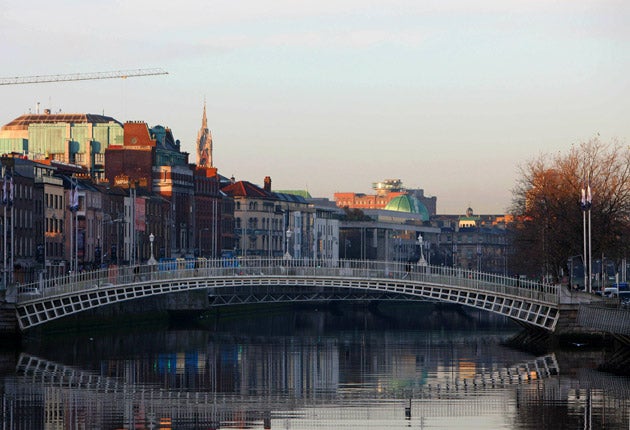The plight of the super-rich tells us what happened to the economy last year – this week we'll find out what happens next
Here are the five things to watch for this week to measure the global economic temperature


Your support helps us to tell the story
From reproductive rights to climate change to Big Tech, The Independent is on the ground when the story is developing. Whether it's investigating the financials of Elon Musk's pro-Trump PAC or producing our latest documentary, 'The A Word', which shines a light on the American women fighting for reproductive rights, we know how important it is to parse out the facts from the messaging.
At such a critical moment in US history, we need reporters on the ground. Your donation allows us to keep sending journalists to speak to both sides of the story.
The Independent is trusted by Americans across the entire political spectrum. And unlike many other quality news outlets, we choose not to lock Americans out of our reporting and analysis with paywalls. We believe quality journalism should be available to everyone, paid for by those who can afford it.
Your support makes all the difference.Will slower growth hit the rich or the poor harder? And is growth really slowing?
The plight of the super-rich hit the headlines this week with publication of the Sunday Times annual ‘Rich List’, which revealed that quite a few – those with their fortunes in oil, commodities or steel – have been hard hit. Inevitably, extreme personal wealth reflects what is going on in the wider world economy and the past year has been a difficult one, for oil and steel in particular.
On the other hand, the central banks are still holding down interest rates so asset prices in general are still doing all right. For example, the Dow Jones index is within a whisker of its all-time high.
There also now seems to be a recovery in the oil price, though not yet much in the steel industry. But the shifting pecking order of the world’s rich reflects what happened last year, not this – and in a matter of days we’ll get the first indication of that.
This week sees first quarter GDP figures for the UK, US, France and Spain. Ours come out on Wednesday, the US ones on Thursday, France and Spain on Friday. The great question will be whether these reflect what seems to have happened – that there was a distinct slowing of growth – or whether any pattern will be discernible.
As a general rule, initial US figures tend to be over-optimistic and are revised down, while British ones are overly pessimistic (remember all that ‘triple-dip’ stuff?) and are later revised up. So we should be careful in jumping to conclusions.
But expect quite a bit of noise, and note that Spain looks like becoming the fastest-growing large eurozone economy this year. It is easy to have a great leap forward if you start from far enough back, but Spain is doing rather well. So too is Ireland, which is growing even faster (but, like Spain, from a long, long way back).
If growth is the first theme of the week, what central banks are doing next will be the second.
This is the week of the next Federal Reserve meeting to set interest rates. There will be no change in rates; no one expects that. But people will be watching what is said by its chair, Janet Yellen, to gain some hint of the timing of the next rise, and indeed whether to expect one, two or three more increases this year.
Core inflation in the US is nudging upwards and the recovery in asset prices will give the Fed some confidence that a gradual climb in rates is the right way to preserve the recovery.
One thing it will be looking at, number three on our list, is US house prices. The best general indicator in such a huge country is the Case-Shiller index, which tracks prices in 20 metropolitan areas. This has been running up at a little under 6 per cent a year. Expect this to be confirmed for the year to end February on Tuesday, just ahead of the Fed meeting.
There is a quite a lot of other data out during the week, but I expect that it will be developments in two commercial stories that will catch the eye. So item four will be whether the UK government does indeed take a role in rescuing the Port Talbot steel works. If, as some believe, global steel prices are set to recover, then it might be wise to buy time to see if the complex can be reconfigured to become profitable.
And item five is the future of the high street retailer BHS. Steel and retailing might seem opposite ends of the commercial food chain, and indeed they are. They have completely different backgrounds, ownership structure and so on. But one of the things that does link them is the burden of pension liabilities. Any would-be rescuer of either might be able to make a go of the business but could not cope with the pension liabilities on top.
That issue will dog many companies around the world for the next 30 or more years – and, I fear, will quite unfairly trouble many pensioners too.
Join our commenting forum
Join thought-provoking conversations, follow other Independent readers and see their replies
Comments